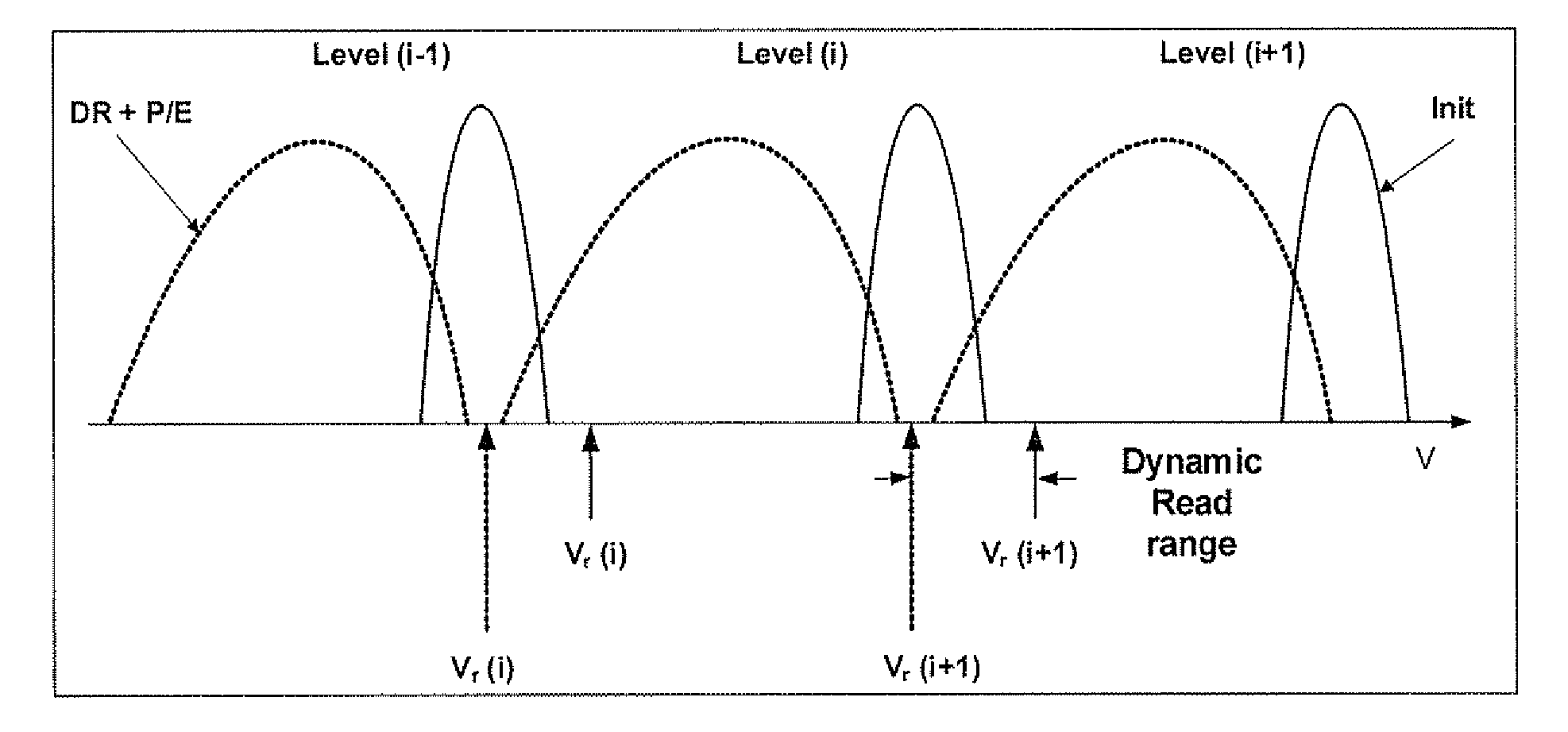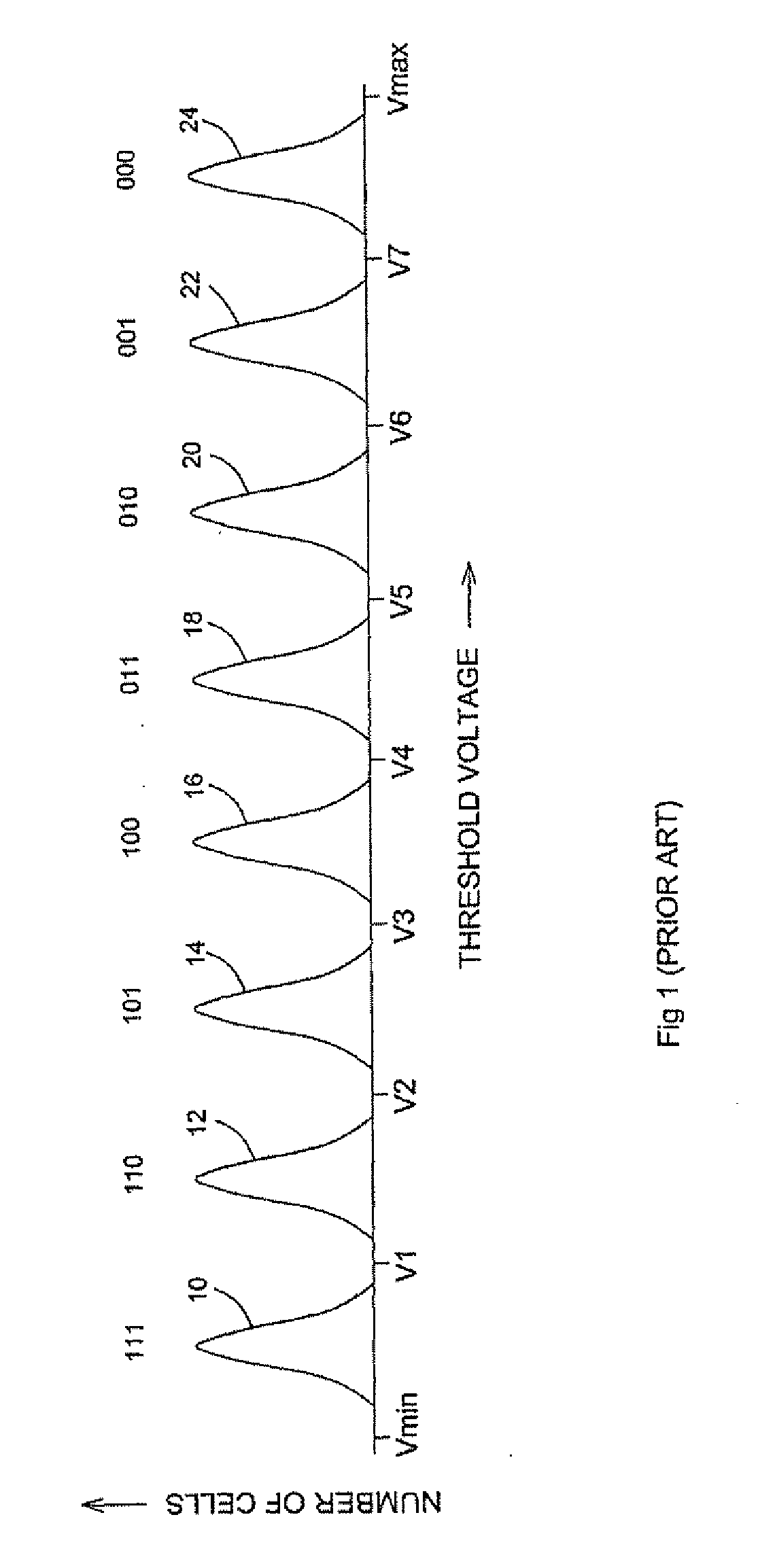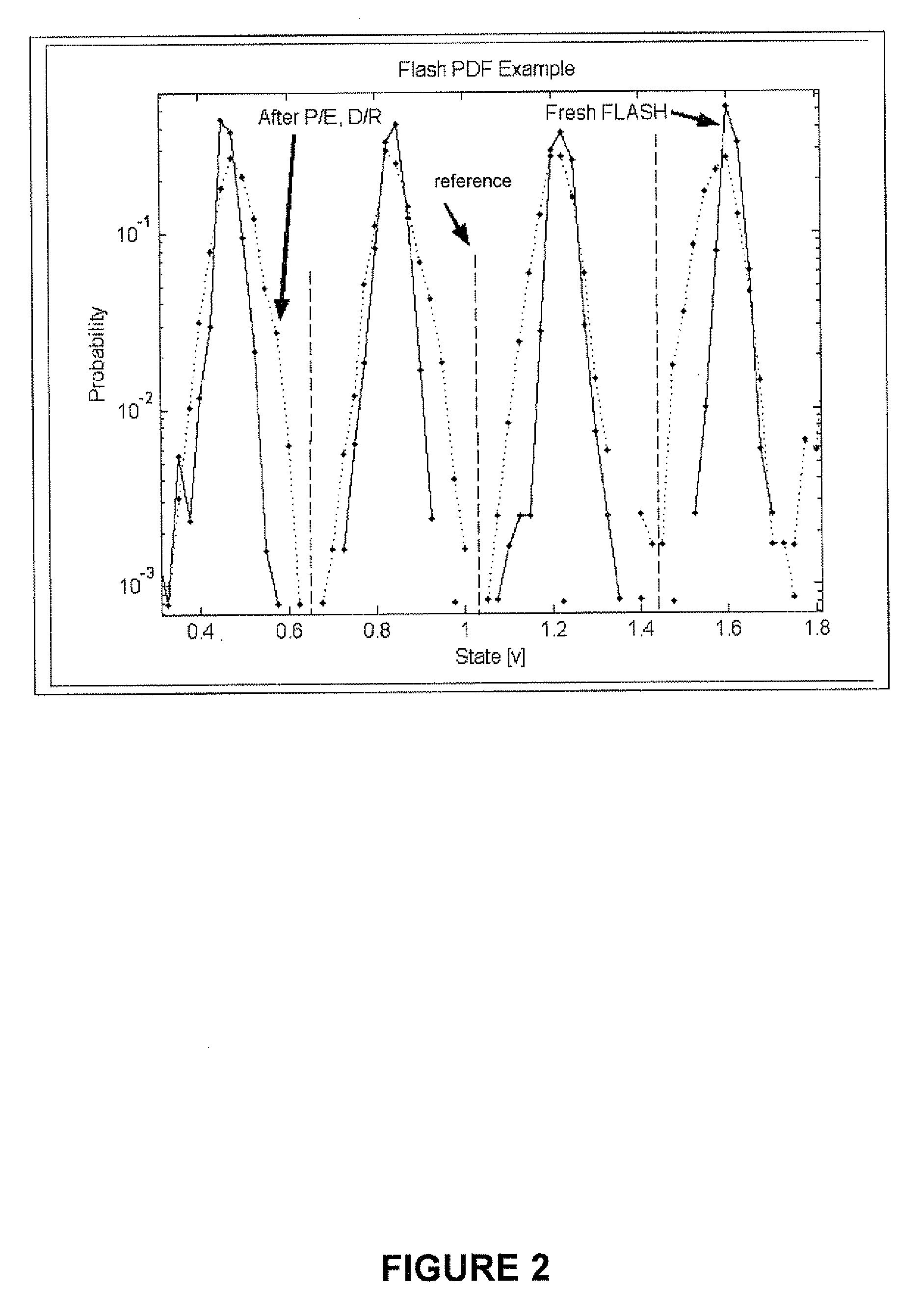Adaptive dynamic reading of flash memories
a flash memory and dynamic reading technology, applied in read-only memories, instruments, static storage, etc., can solve the problems of flash voltage, prior art approaches possess a serious drawback,
- Summary
- Abstract
- Description
- Claims
- Application Information
AI Technical Summary
Benefits of technology
Problems solved by technology
Method used
Image
Examples
example
[0118]We performed simulations to evaluate the effectiveness of algorithm 2 and 3 using L=16 and several values for m.
[0119]The simulations were performed using the following steps:[0120]We started with a multi-Gaussian CVD corresponding to initial (default) read voltage thresholds.[0121]With Δω=W / 64, for each of the Gaussians in the CVD we randomly chose a shift SH based on a normal distribution N(μSH=−1.07Δω,σSH=0.53Δω) and a widening factor WD based on a normal distribution N(μWD=0,σWD=0.21Δω) and changed the Gaussians parameters accordingly. In other words, the i-th Gaussian in the updated CVD is a Gaussian that initially had a distribution N(μi,σi), where σi=Δω and μi=iW / 16, and after the change had a distribution N((μf=μi+μSH,σf=√{square root over (σi2+σWD2+σSH2)}).[0122]We randomly generate a read page according to the updated CVD.[0123]We measure the CER according to the default read reference threshold voltages, denoted as CERdefault.[0124]We measure the CER according to th...
PUM
 Login to View More
Login to View More Abstract
Description
Claims
Application Information
 Login to View More
Login to View More - R&D
- Intellectual Property
- Life Sciences
- Materials
- Tech Scout
- Unparalleled Data Quality
- Higher Quality Content
- 60% Fewer Hallucinations
Browse by: Latest US Patents, China's latest patents, Technical Efficacy Thesaurus, Application Domain, Technology Topic, Popular Technical Reports.
© 2025 PatSnap. All rights reserved.Legal|Privacy policy|Modern Slavery Act Transparency Statement|Sitemap|About US| Contact US: help@patsnap.com



